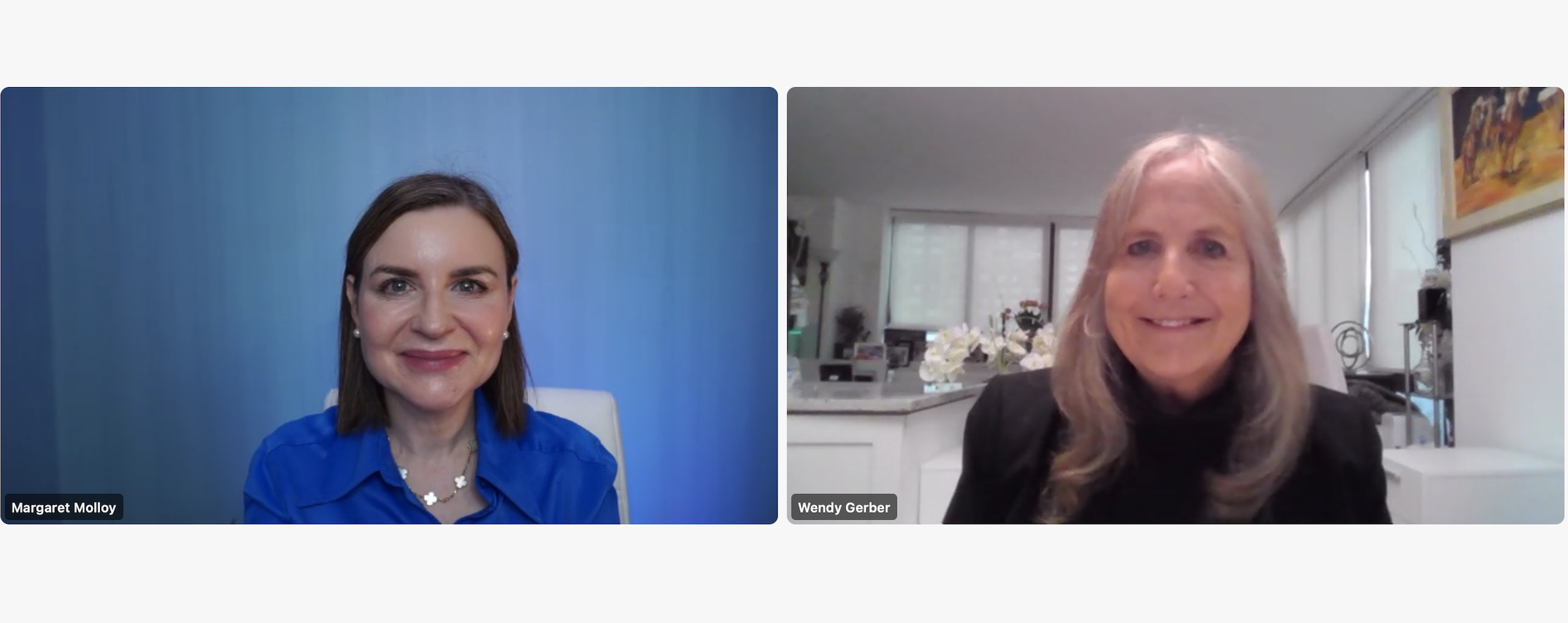In our Unlocking Brand series, our branding experts go behind-the-scenes for a look at exceptional brand-building cases. In our latest installment, “ESG and brand-building,” our Global CMO, Margaret Molloy, spoke with our Executive Director of Strategy and Head of ESG Advisory, Wendy Gerber.
Together they explored how ESG (Environmental, Social, Governance) and leading with purpose is critical to build brand reputations, drive business growth and build loyalty among customers for both B2C and B2B companies. For the complete conversation, head over to the Siegel+Gale Says podcast on Apple Podcasts or Spotify.

Margaret Molloy: Wendy, with regards to ESG, what is the opportunity for brands?
Wendy Gerber: ESG is a transformation catalyst—it is an opportunity to drive long-term value for brands. And making a profit and focusing on ESG are not mutually exclusive goals. Quite the opposite—when aligned, ESG initiatives power innovation and growth.
Develop clear, transparent and motivating ESG goals that align with your brand strategy and your corporate strategy. ESG initiatives done right will build your brand, drive growth and engage your stakeholders. A brand’s ability to engage customers in sustainability initiatives helps build relationships and differentiate brands.
M.M.: Many brands already do purpose work. How does ESG intersect with purpose?
W.G.: The future for brands is rooted in purpose activated through ESG. But it’s important for brands to understand the difference between rallying behind a cause and standing for a purpose that aligns with their strategy. If brands randomly pick causes—or don’t walk the talk—consumers and the media will see right through that. Companies that lead with purpose, build integrated ESG initiatives around it, and tell their story in an impactful way build loyalty among consumers.
M.M.: Are consumers willing to pay more for a sustainable brand?
W.G.: Sustainability is becoming increasingly important in consumers’ purchasing decisions, especially as consumers see themselves as important catalysts for change. Two-thirds (66%) of people surveyed in the U.S. are willing to pay more for sustainable products, up from last year (64%), according to the Business of Sustainability Index.
Building loyalty and trust among customers is key to marketing efforts. Companies need to be transparent and authentic—and accurate. They need to back up claims with real actions. To build credibility and resonate with customers, it’s important that communications about sustainability clearly and accurately note environmental benefits (for example in emissions reductions and offsets, and sustainable manufacturing). Consumers are becoming savvy to greenwashing.
M.M.: How can companies decide which areas are most worth pursuing?
W.G.: The first step is for companies to do a “materiality assessment,” which helps an organization determine which ESG issues matter most to its stakeholders and its business.
Some industries have specific risks to address—for example the fashion industry accounts for 10% of global carbon emissions—more than international flights and shipping combined! And 92 million tons of textile waste is created annually by the fashion industry. So, building a circular model to repair, recycle and rent clothing is important. Plus, the human rights issues in supply chains. Companies can also target issues they find most important. Morgan Stanley, for instance, is focused on reducing plastic waste, as well as sustainable finance.
These priorities can come from leadership, or they can come from employees. It shouldn’t just be top down—ideally, employees are engaged as well. This is a terrific way to create connections!
M.M.: I now want to focus on B2B brands. How can they think about ESG and minimizing their footprint when these initiatives may not be as much in the forefront to consumers who might use their business anyway?
W.G.: Even if you’re not consumer facing, you need to develop strong ESG practices to minimize your carbon footprint—this is also a way to bring employees along on the journey. Having a sense of purpose or shared mission is critical for companies to retain top talent. Purpose-driven companies have 40% higher levels of employee retention.
M.M.: Lastly, what do companies starting out need to know?
W.G.: ESG is a journey and companies are at different stages. Just get started on the journey! Brands need to embrace ESG to be relevant and attract customers, employees, and investors.
Begin to think about what environmental and social issues are material to your business, what you’re already doing, what your goals are, and then start to build strategies and programs. You can try to do it internally or hire a consultant to help build a roadmap and ESG programs. Don’t try to do too much, too fast. But make sure what you do is authentic and transparent. To optimize ESG, it should be embedded in your DNA and across your business. And tie it into your brand.




